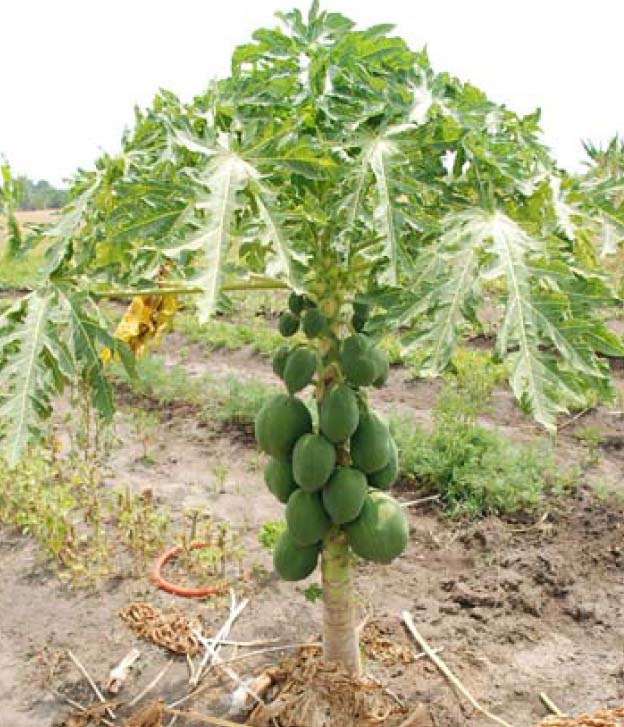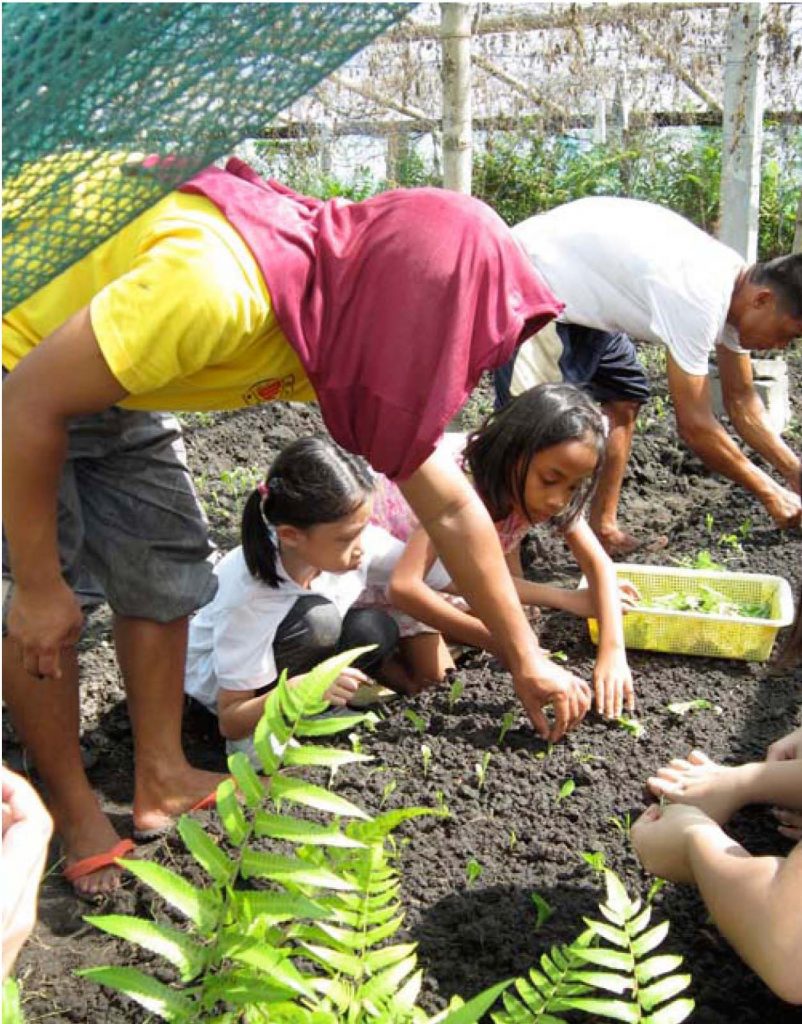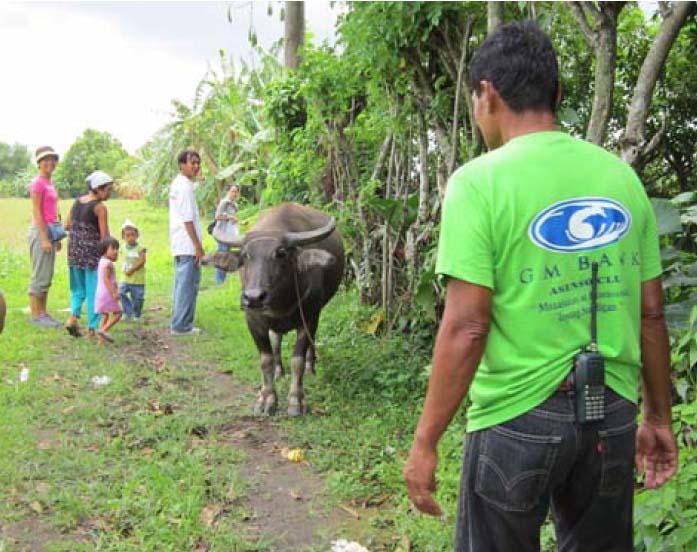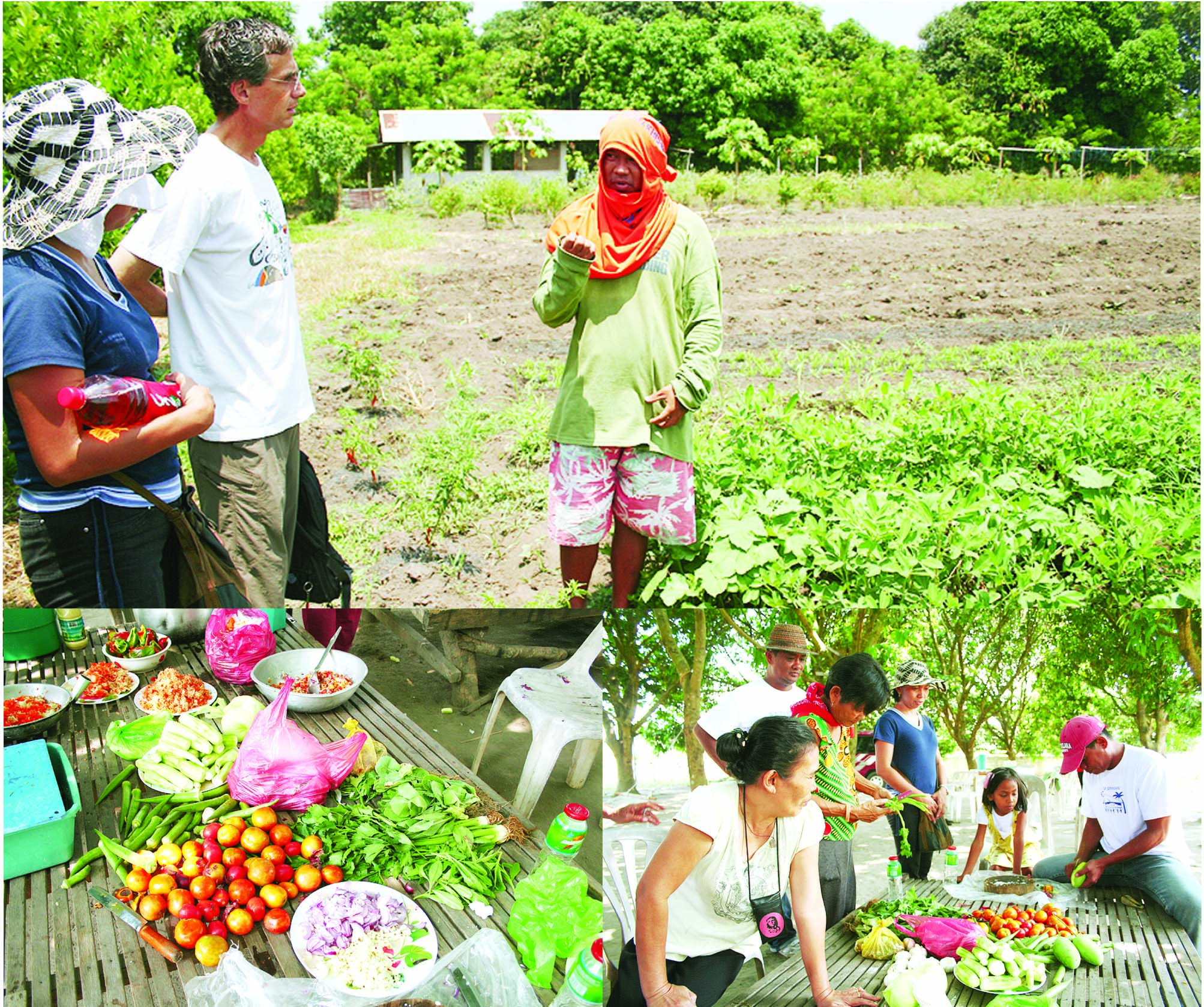First published in Tulay Fortnightly, Chinese-Filipino Digest 25, no. 3 (July 10-23, 2012): 16, 15.
“U y, galing Baguio yan” or “Galing Zambales yan.”
Vendors at the wet market will gladly impart such information, believing it means something to customers seeking quality. Yet, these phrases may mean nothing to many shoppers.
Even as produce moves from farm to table, most consumers do not think about its origins, much less how it was produced, as long as it is fresh and free from holes.
Well, the folks at collective Good Food Community want people to ask where food comes from. Terms like “fair trade” (usually for coffee), “organic farming” and “sustainable agriculture” go around, but few bother to look beneath the surface.
Not good, say Good Food Community founders.
Vegetables and fruits go into our bodies. Some social consciousness is in order. It behooves us to know where they come from; whether the farmers who produce them actually have their three square meals daily; what it takes for a farmer to produce that green leafy pechay or the big round squash; what chemicals have been sprayed on the plant or put into the soil and ultimately our bodies.

Community Shared Agriculture or Community Supported Agriculture believes agriculture should be supported jointly by a mutually beneficial partnership between farmers and consumers.
It is a socio-economic model for local farming and food distribution. It also gives consumers direct access to local and seasonal produce directly from farmers.
Think of it as getting fresh food products, cut flowers, herbs, or even dairy products on a regular basis while at the same time, pledging continuous support to the primary producer.
The CSA movement began in Europe and Japan in the early 1960s to address concerns about food safety, especially with pesticide use in farming.
Local Harvest, a leading organic food website in the United States, frames the basics of CSA thus: A farmer offers a certain number of “shares” to the public.
Typically, the share consists of a box of vegetables, but other farm products may be included. Interested consumers purchase a share (also known as a “membership” or a “subscription”) and in return receive a box (bag, basket) of seasonal produce each week throughout the farming season.
At GFC, shareholders pick up 3.5 kilograms of various organic vegetables weekly from pre-arranged points.

Farmers try to offer different packages every week. In each pack is a mix of hardy vegetables and green leafies, such as okra, a quarter of a squash, a couple of patola, spinach, kangkong, saluyot, talbos ng kamote, green chilis, tanglad, basil leaves. On another week, there may be peanuts, eggplant, ampalaya, kamote, onions, kalamansi, pechay, spinach, alugbati, ginger.
However, a consistent supply is not easily achieved. The key idea here is that consumers are shareholders, not simply customers.
This is the most important CSA concept: shared risk. The CSA began when a group of people bought a farm, hired a farmer and each took a share of whatever the farm produced for the year. If the farm had a tomato bonanza, everyone put some up for winter. If locusts ate all the greens, people ate cheese sandwiches.
Local Harvest reveals that very few such CSAs exist today, and for most farmers, the CSA is just one of the ways their produce is marketed. They may also go to the farmers market, do some wholesale, sell to restaurants, middlemen, etc. Still, the idea that “we’re in this together” remains.

Members may be asked to sign a policy form indicating they will accept without complaint whatever the farm can produce.
Charlene Tan, GFC founder, shares, “My friends and I crafted this particular set-up, although we are modifying it along the way based on feedback.
“It is hard to say whether it is more a business or a social venture because the two terms are related in complicated ways. Sometimes we earn money and sometimes we do not.
There are many reasons why we do what we do and how we do it and it is more a balancing act while keeping our eyes on the vision. It is kind of like dreaming with our feet, idealistic but grounded.”
It is a bit more difficult to run CSA in the Philippines because farms are so far away from urban centers. The farm GFC supports is in Capas, Tarlac, up to four hours’ drive from Manila. Shareholders have been invited to Kumustahan Sessions: regular farm trips for them to get to know the farmers who grow their food.

An occasional newsletter shares information on each month’s harvest, tips, updates on the farm and relevant sustainable living topics. At the end of the day though, it is still difficult for some consumers to accept that they cannot shop for their food.
It might take a while for CSA to become the norm as Filipinos are used to buying their produce either in the wet market or the supermarket. Yet, a CSA share in this social enterprise yields these benefits:
- Receive fresh organic vegetables from a known source;
- Improving understanding about food production and the real costs involved;
- Reconnect with the land;
- Improve knowledge of seasonality;
- Learn about new and traditional varieties of fruit, vegetables and herbs;
- Have access to a farm as a resource for education, work and leisure;
- Experience improved well-being through better diet, physical work, socializing and time spent in the countryside;
- Have a sense of belonging to a community.
On the other side of the fence, farmers benefit from a more secure income and a higher and fairer return for products by selling direct to the public, cutting out middlemen. Since they have met with customers, they may take greater care growing their produce.
For example, shareholder Denise Celdran of Edgy Veggy, a vegetarian food delivery service, has talked to the farmers about what she needs for the season. The farmers have given her direct feedback regarding what is doable barring typhoons or water shortage.
This might be a side benefit but by participating in CSA enterprises, consumers are able to influence the local landscape and help a farm make the transition to more sustainable farming methods.
Tan’s vision for Good Food Community is to have a community of sharing and caring as the most sustainable solution to social and environmental degradation. For this year, she hopes to bring in 50 farmers and 350 stakeholders into the community while continuing to offer delightful items in shareholders’ weekly pick ups.
For more information, see www.goodfoodcommunity.com.





